Monday Morning Update 1/7/19
Top News
The VA finally has its first permanent CIO in two years after the Senate confirms James Gfrerer as assistant secretary of information and technology.
The 20-year Marine Corps veteran and US Naval Academy computer science graduate most recently worked for Ernst & Young. He has spent most of his career working on IT business risk and cybersecurity.
Gfrerer replaces interim CIO Camilo Sandoval, a military veteran and former Trump campaign executive.
Reader Comments
From Casual Commitment: “Re: sharing Epic screen shots. Some customers would release shots of every single screen. It’s hard to create a competitive advantage with software and harder to maintain it over time. Customers could release every screen shot of a new release to the world even before going live and competitors could simply copy it, taking away the incentive to create innovation and usability. Some would argue that it’s in the best interest of science and/or safety, but I think most vendors are OK with using images for those purposes and would not ask a client to take them down. Vendor contracts nearly always require clients to get permission before sharing confidential information and academic medical centers often require the same assurances that their confidential information not be shared.” Sometimes I question whether just getting a look at the user interface exposes the intellectual property underneath, but I admit that I’ve written some programs that were inspired by seeing a screenshot or demo, then figuring out how to make it work under the covers, so I can buy that.

From Epic Customer: “Re: sharing Epic screen shots. Epic publishes its straightforward approach, but it isn’t well publicized at customer organizations and folks don’t check with the IT department when preparing their publications. Then they are notified that they have used a screenshot inappropriately and are upset that their publication needs to be take down or changed. Blaming Epic doesn’t seem appropriate, but clients are challenged to make it clear to staff the restrictions that ALL vendors impose on to prevent inappropriate use of proprietary information. Most health systems have committees, which would seem to be needed to guide compliance.” Epic Customer provided Epic’s predictably thorough and clear screenshot guidelines, which say:
- Any public sharing of Epic content (to websites, other vendors, presentations other than to Epic clients, research papers, publications, and books) requires Epic’s review via its Content Approval process, which takes about two weeks.
- The submission requires stating why using the screen shots is necessary, who will see it, how it will be distributed, and the goal or conclusion of any research (that last aspect troubles me a tiny bit, such as the case where the argument is that Epic’s design endangers patients or burdens clinicians – would that impact the likelihood of approval?)
- Any vendor that will receive Epic screen shots or functionality description must ask Epic before using it.
- An Epic copyright notice must be included on every screen shot.
- Screen shots should crop or blur information not needed for the specific purpose, such as removing menus and toolbars.
- Content can’t be posted on private video or quiz sites (including YouTube) because the terms and conditions of those sites say that anything posted there becomes the property of that site.
From Merger Frenzy: “Re: CommonSpirit Health (the soon-to-be merged Dignity Health and Catholic Health Initiatives). Deanna Wise was announced as the consolidated CIO a few weeks ago, then was gone a few days later with two interims in place. The organizations have very different cultures and IT systems (Cerner at Dignity and Epic, Cerner, Allscripts, Meditech, and others at CHI, I think) but they’ve been working on this for over two years. In addition, the merger has been pushed back again to February 1.” I’ll first say that I detest that embarrassing married name, as I do any time the marketing geniuses decide it will be amazing to simply remove the space between two words while leaving them capitalized (“common spirit” sounds like a bar’s cheap well drink). Deanna Wise was named CIO of the 140-hospital, $30 billion, Chicago-based mega-system in a December 4 announcement. Her LinkedIn hasn’t changed and she’s still listed as EVP/CIO on Dignity’s executive page. That’s all I know, other than that big-ego organizations that are used to calling their own shots often can’t stop arm-wrestling for control before, during, and after a superficially friendly merger.
From Telebicycle Coach: “Re: information blocking. My HIE employer has ONE large non-profit hospital in the entire state that refuses to contribute lab result data, which I suspect is because it wants to sell Epic to small practices that don’t need it and can’t afford it, so it tells them it’s the only way they can get lab data. I would love to hear thoughts.” Intentional health system blocking is rampant, as you might expect when trying to convince competitors in any industry to share internal information. I don’t really have any new thoughts except to say that it should either be made a strictly enforced law (driven by complaints like yours) or a condition of being paid taxpayer money in the form of Medicare. No amount of shaming or dangling the patient benefit carrot has worked, just like it hasn’t for getting hospitals to give patients copies of their own records quickly and inexpensively. Shame is an effective weapon only to the extent that an organization fears being shamed.
From Barnard Rubble: “Re: big data. Is it still a contender for the HISsies ‘most overhyped’ category?” The perpetual frontrunner is actually not on this year’s ballot due to a plethora of fizzy competitors, such as blockchain and IBM Watson Health. Maybe big data has finally summited Gartner’s Peak of Inflated Expectations, although I expect the Trough of Disillusionment to be in the form of the lawyer’s warning to “don’t ask a question for which you don’t want to know the answer.” Big data will tell us what we already know and can’t solve – that our system healthcare system is unfair, unaffordable, inefficient, reflective of primitive social policies, incapable of delivering consistently high outcomes, and rife with profiteers and political influence. It’s nice for society’s financial winners to foresee a world in which their every malady is machine-diagnosed and optimally treated with the best, most personalized therapies available, but people are suffering and dying due to problems that have nothing to do with analytics. We should just declare ourselves a third-world country and then take the Bill Gates public health funding approach – use analytics to identify the most health-impacting problems that can be fixed creatively and inexpensively at scale to benefit the most people in hoping to move up from the dregs of developed nation health rankings.
HIStalk Announcements and Requests

Poll respondents aren’t interested in reading executive interviews that focus on the company’s products or the individual’s personal history – they would rather learn more about the executive’s views on healthcare trends and what they think about life in general. Me, too – I’ve interviewed executives who couldn’t stop blabbing about the amazing potential of their companies under their skilled watch, only to have the company or their careers take a startling stumble soon after. Show us your character and let the rest of us decide whether that piques our interest enough to want to learn more about your business. I’m proudest of my interviews that led readers to feel that they got to know a CEO.
New poll to your right or here: For longstanding HIMSS members: how do you feel about the organization now vs. five years ago? Vote and then click the poll’s comments link to describe what has changed for the better or worse.
Thanks to these companies for recently supporting HIStalk. Click a link for more information.
Two warnings as HIMSS19 approaches (anybody have other Orlando scam alerts?):
- Don’t book your hotels through email solicitations, even when they list seemingly legit hotel names and prices. HIMSS blocks all the hotel rooms, so you can only reserve through them for hotels on their official list.
- Don’t call pizza places whose flyers are shoved under your hotel room door. Those are scams, too, as criminals make up restaurant names, create flyers with phone numbers, and then steal your credit card information when you order that pizza that never arrives (they could get even smarter using a national brand name like Domino’s but with a phony phone number).
Webinars
January 17 (Thursday) 1:00 ET. “Panel Discussion: Improving Clinician Satisfaction & Driving Outcomes.” Sponsor: Netsmart. Presenters: Denny Morrison, PhD, chief clinical advisor, Netsmart; Mary Gannon, RN, chief nursing officer, Netsmart; Sharon Boesl, deputy director, Sauk County Human Services; and Allen Pendell, SVP of IS and analytics, Lexington Health Network. This panel discussion will cover the state of clinician satisfaction across post-acute and human services communities, turnover trends, strategies that drive clinical engagement and satisfaction, and the use of technology that supports those strategies. Real-world examples will be provided.
Previous webinars are on our YouTube channel. Contact Lorre for information.
Acquisitions, Funding, Business, and Stock
SVB Financial Group completes its acquisition of healthcare and life sciences investor Leerink Partners for $280 million in cash and $60 million as a five-year retention pool for Leerink employees (of which D&B Hoovers says there are just 42).

For those who might otherwise forget that US healthcare revolves around business rather than patients, a gallon of meeting room coffee at this week’s JP Morgan Healthcare Conference costs $170 ($21 per cup), hotel rooms for the besuited moneychangers run thousands of dollars, and borrowing 14 power strips in a hotel conference room costs $1,000. Meanwhile, attendees complain about having to dodge San Francisco’s unwashed to get to their all-important meetings about profiting from healthcare services delivery, as hotel security guards and side job police officers shoo away people who are homeless, addicted to drugs, or suffering from mental illness and are thus offensive to the dealmakers whose influence over healthcare policy and delivery keeps increasing. Someone should snap a photo of a money mover in a $5,000 suit (“come on!”) who invests in tech companies pitching population health management or social determinants of health who snootily sidesteps the people the company claims to serve.

Patrick Soon-Shiong is once again a leading candidate in the “pie in the face” HISsies category, so I took a look at NantHealth share price – it’s at $0.62, valuing the once-touted enterprise at a paltry $68 million. NH shares rose to as high as $21 on IPO day in June 2016, having since lost a startling 97 percent of their value. I’m pretty sure I can predict the HISsies pie vote of those early shareholders. The logo reminds me of an old, possibly appropriate, not-safe-for-work joke involving a feather and the distal colon.
People
Echo Health Ventures hires Jessica Zeaske, MHS, PhD, MBA (GE Ventures) as partner.
Government and Politics

Livongo hires its board member and investor Lee Shapiro as CFO. Shapiro was president of Allscripts when Livongo board chair Glen Tullman was CEO of that company.
Other
I finally got around to looking over last month’s telehealth-focused Health Affairs, with these snips from various articles catching my eye:
- Not many doctors or patients are using telehealth, although the numbers are increasing and the available information is dated.
- Lessons learned by four large health systems that have implemented a telehealth program include making sure executives agree on its goals and strategic contribution; coordinating telehealth efforts among multiple departments to set priorities and ensure the availability of support resources; identify champions who can help overcome the resistance of clinicians and employees; develop a patient education and marketing strategy; and evaluate outcomes to support improvement.
- Major health system adoption barriers are cost, payment, and technical issues, with a key factor being how well state Medicaid pays for the service.
- A literature review finds that while telehealth interventions appear equivalent to in-person care, its effect on the the usage of other services is not clear.
- Use of remote experts to support neonatal resuscitation at small hospitals reduces transfers and thus cost, but it is rarely used because nobody pays for it.
- Kaiser Permanente doctors who take chest pain triage telephone calls spent less time per call compared to nurses and sent fewer patients to the ED, but patients accepted the recommendations of doctors at a higher rate. Mortality rates for calls taken by doctors and nurses were similarly low, but direct-to-physician protocols worked best to reduce ED visits and costs.
- Appropriate antibiotic use for acute respiratory infections was about the same in telemedicine and in-person visits, but strep tests were used in only 1 percent of direct-to-consumer visits vs. 78 percent in urgent care centers, leading to more repeat visits following telemedicine sessions.
- CMS’s 2013 decision that a telemedicine doctor can serve as the physician backup for advance practice providers in critical access hospital EDs has led some hospitals to replace local doctor coverage to reduce costs.
I took a quick look at the websites of a few big health systems to see if they had posted their price lists on January 1 as CMS requires, with these results from checking news releases and then searching for “price list” (of course, ignoring the fact that the lists themselves are unhelpful gibberish to consumers):
- New York Presbyterian – has information for one campus only that I could find
- Florida Hospital (now AdventHealth Orlando as of January 1) – yes, but as an XML document that gives an immediate browser error
- Jackson Memorial Miami – yes, but buried deep in the site’s structure
- UPMC Presbyterian – yes, in Excel (the best job of all those I checked)
- Methodist Indianapolis – no
- Montefiore – yes
- Methodist San Antonio – yes
- Orlando Regional Medical Center – no
- Methodist Memphis – yes
- UCSF – yes
- Ohio State – yes

Pro tip from downloading hospital price lists: if admitted to UPMC Shadyside and you take Ativan, the 1 mg dose costs 99 percent less than the 0.25 mg dose (I guess it’s expensive to have someone cut the 0.5 mg tablet in half). Their CDM is full of oddities like this that I assume are the result of shortened descriptions that don’t tell the full story. I started to compare prices across health systems for a few common items, then realized how pointless that would be for consumers or anyone else.

Former New York City Health + Hospitals SVP/CIO Bert Robles is fined $9,000 by the city’s Conflicts of Interest Board for convincing an Epic EVP to let his girlfriend take an Epic certification course with him and for asking his employees to get the girlfriend an H+H ID card so she could use office space and computers to study.
California plastic surgeons derail the attempt of cosmetic surgeons to advertise themselves as “board certified,” with the former questioning the American Board of Cosmetic Surgery’s training program as a “bogus marketing tool” and claiming that 24 percent of its members have been the subject of disciplinary actions after they left other specialties to perform elective and cash-paid breast augmentation, hair transplants, and tummy tucks without extensive training.
Sponsor Updates
- The Journal of Clinical Pathways interviews Richard Loomis, MD chief informatics officer for clinical solutions at Elsevier.
Blog Posts
- Why External Audits are the Best Way to Ensure Revenue Integrity (Hayes Management Consulting)
- Creative Solutions to EHR Training Challenges (Part One) (HCI Group)
- Optimum’s Top 5 Blog Posts of 2018 (Optimum Healthcare IT)
- Seeking Solutions: The Opioid Crisis (Huntzinger Management Group)
- IMAT Solutions Helps Health Payers to Become Data-Driven Organizations (Imat Solutions)
- Similarities between HIPAA and GDPR (Impact Advisors)
- The top five takeaways from the 2018 Gartner Identity and Access Management Summit (Imprivata)
- How Allina Health used EHR data to increase provider efficiency and satisfaction (Nordic)
- A Balanced Digital Marketing Strategy for Your Medical Practice (Influence Health)
- A Simple Wish: Free Up Time for Patient Care (InterSystems)
- Do You Have a “Doctor Famous” Problem? (Kyruus)
- The New Year’s Resolutions You Need to Make if Your Industry Relies on Data (Liaison Technologies)
- “This call is being recorded for Quality Assurance …” (Vyne Medical)
- Rethinking Your Routine in 2019 (Netsmart)
- Checklist for a Consumer-Friendly Patient Financial Experience (Patientco)
- Home health agency thinks like a hospital (PreparedHealth)
- What Do the Top 10 Most Wired Hospitals Have in Common? (Spok)
- ONC Technical Expert Panel: An Insider View (Sansoro Health)
- The Ins and Outs of Test Automation (Santa Rosa Consulting)
- Consumerism Will Spark Change Across the Industry: My Top Seven Health IT Predictions for 2019 (Surescripts)
- The Secret to Documenting for Medical Necessity (WebPT)
Contacts
Mr. H, Lorre, Jenn, Dr. Jayne.
Get HIStalk updates. Send news or rumors.
Contact us.












































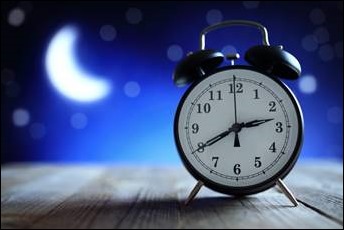









































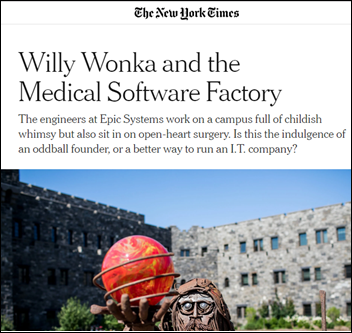
































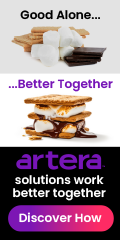















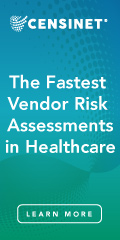






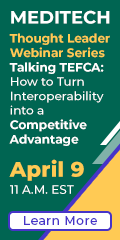





























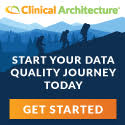

The primary point of using the Cloud is using operating expenses vs limited capital ones and avoiding having to update…